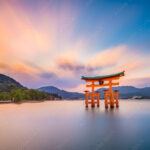When is the best time to visit Niigata, Japan?
Niigata, Japan, is a hidden gem that offers a rich tapestry of **natural beauty, cultural heritage, and historical landmarks**. As a coastal city, it boasts stunning views of the Sea of Japan and offers unique experiences that cater to a variety of interests. From breathtaking rice paddies to the majestic Sado Island, Niigata is a traveler’s paradise. This region is particularly famous for its **high-quality sake**, hot springs, and delicious seafood, making it a gastronomic delight for visitors. The **Niigata travel guide** reveals a host of attractions that reflect the unique character of this beautiful region.
The average temperatures in Niigata vary, with summer highs averaging **29°C** (84°F) and winter lows dipping to **-1°C** (30°F). The city experiences approximately **1,800 mm** of rainfall annually, with heavier precipitation occurring during the summer months. The climatic seasons can be categorized as follows: **spring (mild and colorful), summer (hot and humid), autumn (refreshing and scenic), and winter (cold and snowy)**. Each season brings its own charm and opportunities for exploration.
Tourism in Niigata sees distinct seasons based on weather and cultural events.
- Peak Seasons: The peak tourist periods are during **spring** (March to May) and **autumn** (September to November). These months are popular due to the comfortable weather and natural beauty, particularly the cherry blossoms and fall colors.
- Mid Seasons: **Late summer** (August) can also attract tourists, especially for summer festivals, while early winter (December) sees fewer visitors but offers unique winter sports opportunities.
- Valley Seasons: The winter months (January and February) experience a significant drop in tourist numbers due to cold temperatures and heavy snowfall, making it an off-peak period.
Weather conditions in Niigata vary significantly throughout the year.
- Spring: Temperatures range from **7°C to 20°C** (45°F to 68°F) with low precipitation, perfect for enjoying outdoor activities.
- Summer: Expect high humidity with temperatures between **20°C to 29°C** (68°F to 84°F) and increased rainfall, particularly in July and August.
- Autumn: Expect mild temperatures ranging from **10°C to 23°C** (50°F to 73°F), making it ideal for hiking and sightseeing.
- Winter: Cold temperatures of **-1°C to 6°C** (30°F to 43°F) with heavy snowfall, particularly appealing for winter sports enthusiasts.
Niigata hosts several annual festivals and events that greatly influence tourism:
- Niigata Sake Festival: Celebrated in early October, this festival showcases the region’s famed sake and attracts many visitors.
- Niigata Fireworks Festival: Taking place in late July, this event is renowned for its spectacular displays over the sea.
- Wara Art Festival: Hosted in summer, it features stunning works of art made from straw, attracting art lovers from everywhere.
- Niigata Rice Festival: Held in September, this event celebrates the region’s rice production, featuring tastings and cultural events.
- Winter Sports Events: Various ski competitions take place during winter, attracting winter sports enthusiasts to the region.
In conclusion, discover the enchanting beauty of Niigata and immerse yourself in its rich cultural experiences. With its breathtaking landscapes and vibrant festivals, the **best time to travel to Niigata** is undoubtedly during the spring and autumn, offering travelers a remarkable journey filled with unforgettable memories and experiences.


